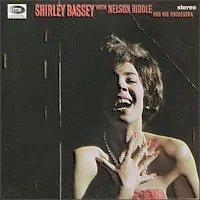Styles: Guitar Jazz
Year: 1993
File: MP3@320K/s
Time: 47:31
Size: 196,6 MB
Art: Front
(3:41) 1. This Time
(4:58) 2. Waltz For Debby
(2:40) 3. If You're Still In Love With Me
(3:45) 4. The April Fools
(5:13) 5. Rayna
(2:59) 6. Natural Thing
(2:49) 7. Waiting For Cathy
(4:34) 8. Julie
(3:50) 9. Nature Boy
(3:36) 10. Dream Come True
(5:09) 11. The Shadow Of Your Smile
(4:12) 12. Christina
Ballads
Year: 1993
File: MP3@320K/s
Time: 47:31
Size: 196,6 MB
Art: Front
(3:41) 1. This Time
(4:58) 2. Waltz For Debby
(2:40) 3. If You're Still In Love With Me
(3:45) 4. The April Fools
(5:13) 5. Rayna
(2:59) 6. Natural Thing
(2:49) 7. Waiting For Cathy
(4:34) 8. Julie
(3:50) 9. Nature Boy
(3:36) 10. Dream Come True
(5:09) 11. The Shadow Of Your Smile
(4:12) 12. Christina
While this collection of ballads from past Klugh releases has many pleasant moments, it's so pastoral and calming that each song fades into another one without making much impression. As background music, they're effective. Klugh's solos are well constructed, marvelously articulated, and his lines and phrasing sublime. The material covers an impressive range of genres, from jazz to pop, originals and standards. Those who enjoy untaxing material should find this another delightful Klugh collection; others seeking visceral fare should look elsewhere. ~ Ron Wynn http://www.allmusic.com/album/ballads-mw0000105266
Personnel: Earl Klugh (guitar), Greg Phillinganes (electric piano, keyboards); Dave Grusin (keyboards); Lee Ritenour (electric & 12 string guitars); Paul Jackson (electric guitar); Charles Meeks, Anthony Jackson, David Saltman (bass); James Bradley Jr., Victor Lewis, Harvey Mason, Raymond Pounds (drums), Ralph MacDonald, Paulinho Da Costa, Dr. Gibbs (percussion).
Personnel: Earl Klugh (guitar), Greg Phillinganes (electric piano, keyboards); Dave Grusin (keyboards); Lee Ritenour (electric & 12 string guitars); Paul Jackson (electric guitar); Charles Meeks, Anthony Jackson, David Saltman (bass); James Bradley Jr., Victor Lewis, Harvey Mason, Raymond Pounds (drums), Ralph MacDonald, Paulinho Da Costa, Dr. Gibbs (percussion).
Ballads




















